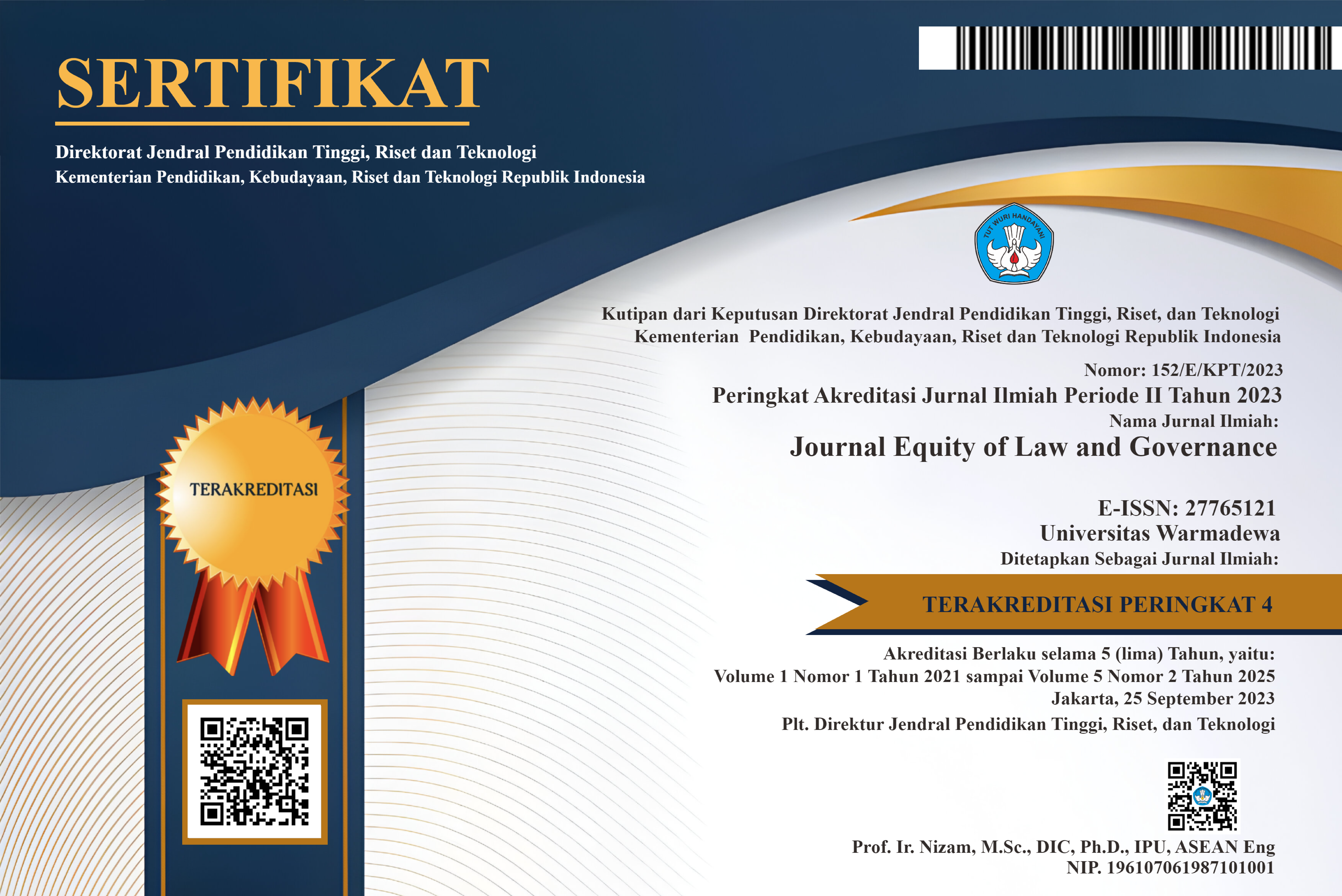Criminal Offenses of Misuse of Deepfake Porn Technology Based on Indonesia's Positive Law
Abstract
This study aims to analyze the adequacy of Indonesia's positive law in addressing the criminal offenses related to the misuse of deepfake porn technology. As information and communication technology continues to advance significantly, many people utilize these technological developments for beneficial purposes. However, these advancements have also contributed to the rise of new forms of cybercrime, such as deepfake porn a manipulated video or photo containing pornographic content. The normative juridical technique used in this study includes secondary data analysis and literature review. Despite laws targeting the use of pornographic content on websites, such as the Criminal Code, Law Number 44 of 2008 on Pornography, Law Number 27 of 2022 on Personal Data Protection, and Law Number 1 of 2024 (Second Amendment to Law Number 11 of 2008 on Information and Electronic Transactions), the findings show that Indonesia's current legal framework is insufficient to effectively prosecute deepfake porn offenders. The absence of precision in these legal laws regarding deepfake porn reveals serious weaknesses in the criminal law policy of the nation.
References
Faqih, M., & Priowirjanto, E. S. (2022). Pengaturan pertanggungjawaban pelaku penyalahgunaan deepfakes dalam teknologi kecerdasan buatan pada konten pornografi berdasarkan hukum positif Indonesia. Jurnal Indonesia Sosial Teknologi, 3(11), 1156–1168.
Kasita, I. D. (2022). Deepfake pornografi: Tren kekerasan gender berbasis online (KGBO) di era pandemi COVID-19. Jurnal Wanita Dan Keluarga, 3(1), 16–26.
Liégeois, J.-P., Mogessie, A., Asrat, A., Demissie, M., Bowden, P., & Bonin, B. (2009). Russell Black (1930–2009). Journal of African Earth Sciences, 55(3–4), 129–133. https://doi.org/10.1016/j.jafrearsci.2009.04.007
Muhammad Ilman Abidin. (2023). Legal Review Of Liability From Deepfake Artificial Intelligence That Contains Pornography. MIMBAR?: Jurnal Sosial Dan Pembangunan, 79, 344–352. https://doi.org/10.29313/mimbar.vi.2965
Prof. Dr. H. Moh. Askin, S. H., & Masidin, S. H. M. H. (2023). Penelitian Hukum Normatif: Analisis Putusan Hakim. Prenada Media.
Rifka Gebriella Daytora. (2023). Tinjauan Hukum Pidana Terhadap Penyalahgunaan Teknologi Deepfake Berkonten Pornografi (Deepfake Porn).
Sobron, M., & Lubis. (2021). Implementasi Artificial Intelligence Pada System Manufaktur Terpadu. Seminar Nasional Teknik (SEMNASTEK) UISU, 4(1), 1–7. https://jurnal.uisu.ac.id/index.php/semnastek/article/view/4134
Syihabudin, A., Jatnika, A. W., Singarimbun, A., & Khoiri, S. (n.d.). The Development of Information Technology Application of Religious Charity Through Humanities Technology Approach. MIMBAR Jurnal Sosial Dan Pembangunan, 35, 2. https://doi.org/10.29313/mimbar.v35i2.4885.
Wulandari, E. P., & Krisnani, H. (2020). Kecenderungan menyalahkan korban (victim-blaming) dalam kekerasan seksual terhadap perempuan sebagai dampak kekeliruan atribusi. Share: Social Work Journal, 10(2), 187–197.
Yudoprakoso, P. W. (2019). Kecerdasan Buatan (Artificial Intelligence) Sebagai Alat Bantu Proses Penyusunan Undang-Undang Dalam Upaya Menghadapi Revolusi Industri 4.0 Di Indonesia. Simposium Hukum Indonesia, 1(1), 450–461.
 Abstract viewed = 21 times
Abstract viewed = 21 times
 pdf downloaded = 13 times
pdf downloaded = 13 times













